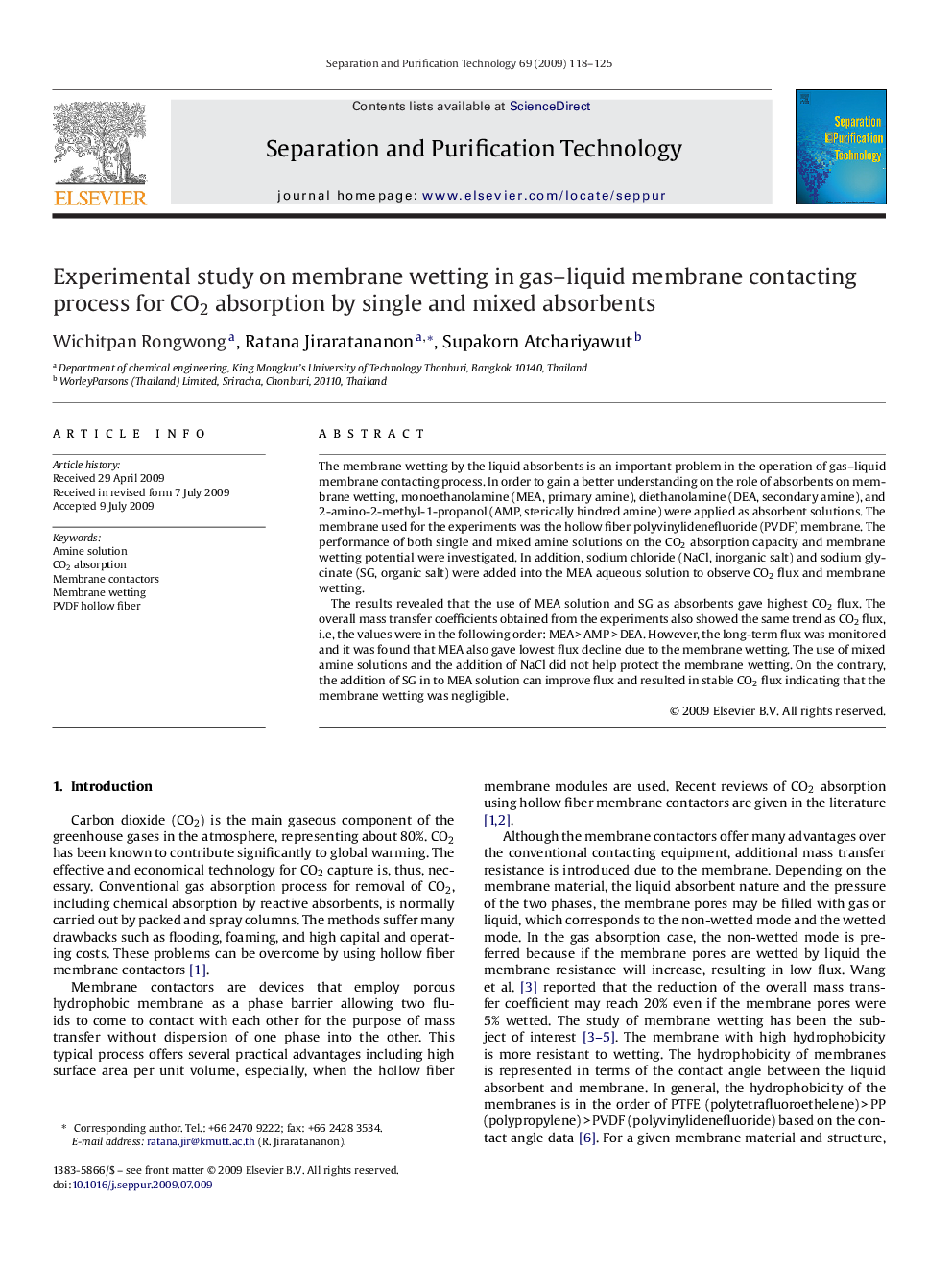| Article ID | Journal | Published Year | Pages | File Type |
|---|---|---|---|---|
| 643222 | Separation and Purification Technology | 2009 | 8 Pages |
The membrane wetting by the liquid absorbents is an important problem in the operation of gas–liquid membrane contacting process. In order to gain a better understanding on the role of absorbents on membrane wetting, monoethanolamine (MEA, primary amine), diethanolamine (DEA, secondary amine), and 2-amino-2-methyl-1-propanol (AMP, sterically hindred amine) were applied as absorbent solutions. The membrane used for the experiments was the hollow fiber polyvinylidenefluoride (PVDF) membrane. The performance of both single and mixed amine solutions on the CO2 absorption capacity and membrane wetting potential were investigated. In addition, sodium chloride (NaCl, inorganic salt) and sodium glycinate (SG, organic salt) were added into the MEA aqueous solution to observe CO2 flux and membrane wetting.The results revealed that the use of MEA solution and SG as absorbents gave highest CO2 flux. The overall mass transfer coefficients obtained from the experiments also showed the same trend as CO2 flux, i.e, the values were in the following order: MEA> AMP > DEA. However, the long-term flux was monitored and it was found that MEA also gave lowest flux decline due to the membrane wetting. The use of mixed amine solutions and the addition of NaCl did not help protect the membrane wetting. On the contrary, the addition of SG in to MEA solution can improve flux and resulted in stable CO2 flux indicating that the membrane wetting was negligible.
